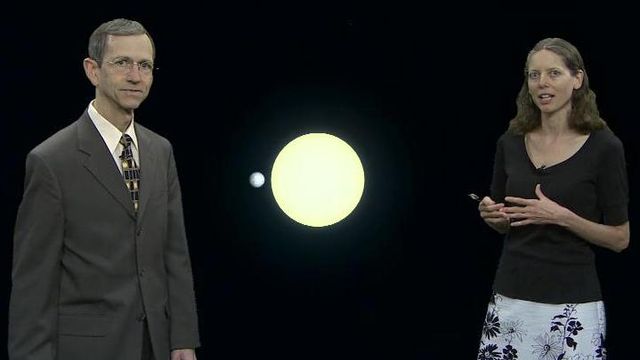Venus to cross sun in NC sky
North Carolina has a chance Tuesday to see part of a once-in-a-lifetime transit of the planet Venus across the face of the sun.
Posted — UpdatedNorth Carolina has a chance Tuesday to see part of a once-in-a-lifetime transit of the planet Venus across the face of the sun.
Venus orbits the sun faster than Earth and closer to the sun. It periodically passes in front of the sun based on our perspective here on Earth. But that period is a bit odd due to the orbits of the two planets. Remember there are three dimensions at work there as well.
Think of two hula hoops, one smaller (Venus’s orbit) than the other (Earth’s orbit). Venus moves around its hula-hoop faster than Earth does, catching up with Earth every 19 months (583.92 days to be exact, its synodic period). However, those hula-hoops are tilted slightly (3.5 degrees), making most of those points where Venus catches up and passes Earth either above or below Earth’s orbit.
Take those tilted orbits, varying orbital speeds and you get the weird 8-year, then 105-year, then 8-year, then 121-year waits.
Venus’s motion is not the only factor in how we might be able to view the transit. We are moving here on the Earth, and that movement, coupled with our position on Earth, impacts the shape of Venus’s path across the face of the sun.
You might have seen the diagram showing a straight path across the top of the sun. That’s from the press release put together by experts at NASA’s Solar System Exploration Division at the Goddard Space Flight Center in Maryland.
No one will probably get that view, however, because it is only possible from the North Pole. When communicating an event that varies by where you are on Earth, a central point must to be chosen. For transits, the North or South poles are used to eliminate the effect of latitude. Similarly, scientific organizations like NASA use Universal Correlated Time (Greenwich Mean Time) for all time-based data.
Generally speaking, the further north you are, the straighter the path will be. Below the equator, Venus will even make a looped path across the sun.
In Japan, the entire transit will be visible, with Venus entering from the left and swooping up before diving down to exit on the lower right of the sun’s face. In the Philippines, the path looks like a cursive lower case 'e' that would make any elementary teacher proud.
India’s view is opposite ours, beginning at sunrise with the remaining two-thirds of the event visible that sunset keeps us in North Carolina from seeing. India's view is on the left side of the face of the sun, while our show happens on the right.
Without sufficient protection such as a #14 welders mask, a telescope with a proper solar filter or the very dark "eclipse glasses," you should never look directly at the sun. Sunglasses aren't sufficient, either. Venus won't block enough of the sun to be viewed safely without proper protection. If you dont have any of these things in the back of your closet, you can still be a part of this astronomical event.
Several science museums in the area are hosting free family events starting at 5:30 p.m. Tuesday. Each will include talks on the transit, Venus, the sun and how transits are used outside our solar system to discovery planets. Each event also includes safe viewing of the transit with solar telescopes, telescopes modified with solar-safe filters and run by knowledgeable volunteers from area astronomy clubs.
Copyright 2024 by Capitol Broadcasting Company. All rights reserved. This material may not be published, broadcast, rewritten or redistributed.






